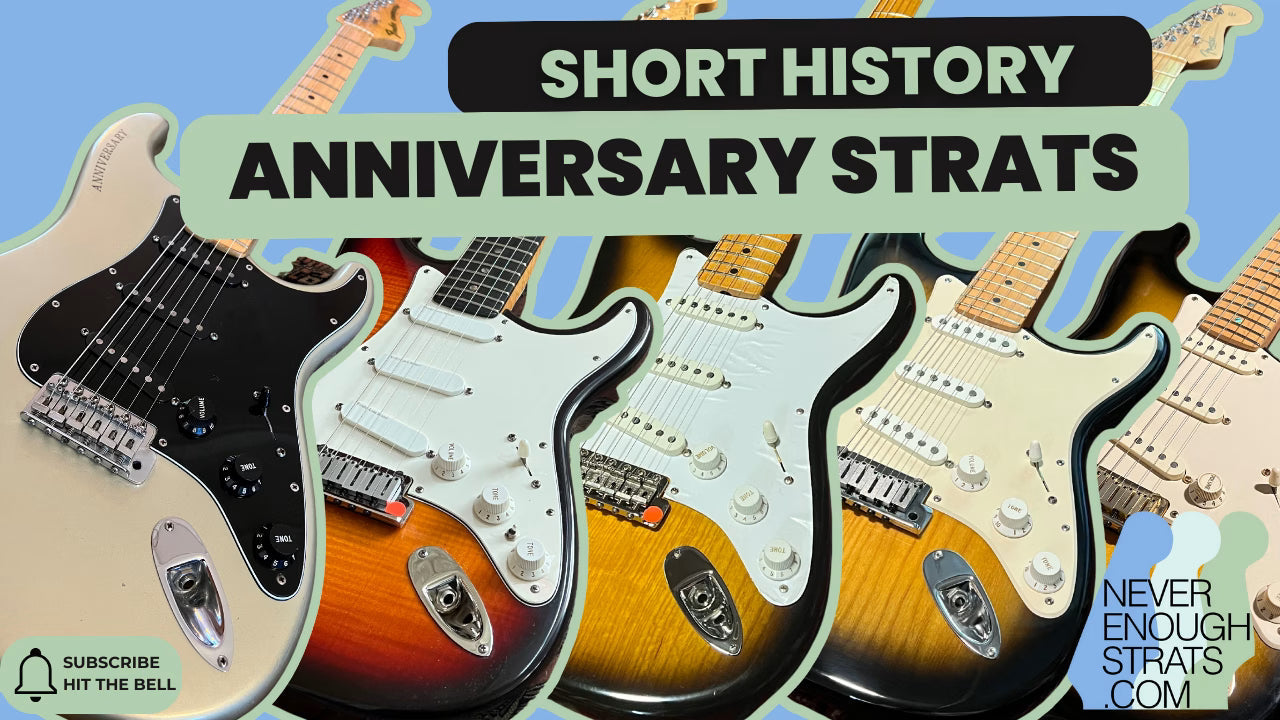Relicking a brand new guitar—scratching it, dulling the finish, making it look decades old—sounds counterintuitive to some. Why take a pristine, handcrafted Fender Custom Shop Stratocaster and age it on purpose? That’s what I used to think too. But after handling hundreds of guitars, from showroom-fresh New Old Stock models to beat-up Heavy Relics, I’ve come to love them all for different reasons. The journey of relicking is a fascinating one—steeped in player demand, vintage authenticity, and evolving craftsmanship.
Let’s dive into how it started, and why Fender Custom Shop relic guitars have become some of the most desirable instruments in the world.
If you're already drooling over the idea of a relic Strat, don’t wait—get in touch via email or the WhatsApp button on our website. We’re always happy to send more pictures, discuss specs, and even negotiate. And yes, we accept offers.
A Brief History: The Origins of Relicking
The story of relicking begins in the early days of the Fender Custom Shop, founded in 1987. Initially, it wasn’t about building worn-out guitars—it was about restoring vintage ones. Artists like Eric Clapton and Robert Cray turned to the Custom Shop for replacement necks and parts for their beloved old Fenders. But here’s the catch: brand new parts looked, well, brand new. They clashed with the worn-in look of vintage guitars.
So, the solution? Make new parts look old.
And that, right there, is the seed of relicking.
But the first actual relic guitars—built from the ground up to look vintage—came later, in 1995. Fender didn't do the aging themselves initially. Instead, they outsourced it to Vince Cunetto, a now-legendary figure in the world of relic guitars. From 1995 to 1999, Cunetto and his team relic’d guitars in his own workshop, and today those instruments are considered collector’s gold.
Want to spot a Cunetto Strat? Look for a branded Fender Custom Shop logo burned into the wood on the back of the headstock—no decal. They’re rare, they’re valuable, and they’re going up in price every year. Just like the Olympic White 1960s Relic I’ve got hanging behind me right now.
The Relic Levels: From NOS to Super Heavy
Today, the Fender Custom Shop offers a whole spectrum of relic finishes—each with its own story and aesthetic. Here’s how they stack up:
New Old Stock (NOS)
A faithful recreation of a vintage Strat as if it were brand new in the year it was built. Think: a 1963 Strat in Lake Placid Blue, made with vintage-correct parts on vintage machines—just without the wear. This is a "time capsule" guitar. No dings, no scratches—just the glow of untouched nitrocellulose.
Example: 2022 Lake Placid Blue Strat with '69 pickups and a C-shaped neck.
Closet Classic
Looks like it was bought in the '60s, played a handful of times, then tucked away for decades. No major wear, but subtle finish checking and signs of age. Nitro finish, aged metal parts, but no buckle rash or forearm wear.
Example: 2020 1959 Hardtail with rosewood fretboard and beautiful finish checking.
Journeyman Relic
This Strat has seen some things. Played on stages, bumped into amps, taken on tour—but still treated with care. The wear is moderate: edge scuffs, faded lacquer, a few small dings. Fender’s way of saying, “This guitar has stories.”
Example: 60/62 Journeyman with '60/'63 pickups, C-shaped neck, worn body contours.
Relic
This is the standard relic level, and the one Cunetto models typically fall under. More aggressive wear: forearm contours rubbed to wood, visible pick scratches, buckle rash, aged plastics, and dulled paint. It’s the sweet spot between realism and vibe.
Example: 2021 1958 Surf Green Strat with hand-wound Fat '50s pickups and maple neck. Includes “ghosting” wear around the frets and relic fretboard edges.
Heavy Relic
For players who want their guitar to feel like it’s been gigged every night for 40 years. Worn wood, exposed body grain, stained finish, heavy buckle rash, deep arm wear. It’s not subtle—it’s a statement.
Example: 2021 60s Strat with '60/'63 pickups, C-neck, and serious stage wear detail.
Super Heavy Relic
Only for the bold. Extreme wear, complete paint removal in areas, neck stripped bare for fast playing, pickguard and hardware distressed to match. Fender’s artists often study vintage icons like Rory Gallagher and Stevie Ray Vaughan to replicate these finishes.
Example: 2019 Big Head 1966 NAMM Limited Edition in Ocean Turquoise with a gold anodized pickguard, hand-wound Fat '50s pickups, flamed maple neck, and relic-to-the-bone neck and body.
Why Relics Matter (And Why They Cost More)
You’re not just paying for looks. Every relic Strat from the Fender Custom Shop is built, then aged—by hand. It’s double the work. From finish checking to wood staining, every mark is intentional. And ironically, these “destroyed” guitars are some of the most expensive on the market. But that’s because they play—and sound—like no other.
And the demand? It’s skyrocketing. A Cunetto relic might fetch €6,000 today—the same as a brand-new heavy relic model. These guitars are playable investments.
Take It Home (Or Make It Yours)
Check our website for our current collection—availability changes frequently, and our stock of Fender Custom Shop Stratocasters is always rotating. If you see something you love, don’t wait too long.
Visit Never Enough Strats for detailed photos, specs, and prices. Want to chat or make an offer? Drop us an email or message us directly on WhatsApp.
Whether you want the pristine feel of an NOS or the battle scars of a Super Heavy Relic, one thing is clear: Fender Custom Shop relics aren’t just guitars. They’re stories. And yours is waiting.
Let me know if you’d like this turned into a publish-ready HTML or CMS format.



